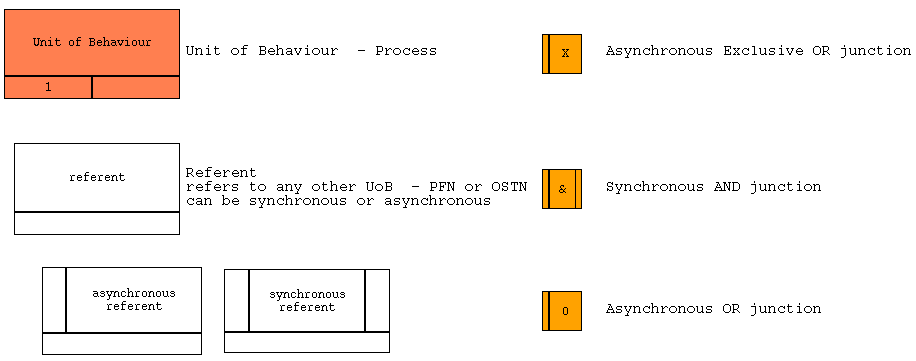Modelling with IDEF3 - Process Capture Method
A model of the Air Campaign Planning process is being built up using the IDEF3 process capture method.IDEF3 is part of the IDEF family of methods development funded by the US Air Force to provide modelling support for systems engineering and enterprise integration. The IDEF family includes modelling methods such as IDEF0 and IDEF1 (which are well-established process and data modelling methods), and descriptive methods such as IDEF3 and IDEF5, (an ontology description capture method).
IDEF0 is the earliest of the methods and is based on Structured Analysis and Design Technique. IDEF0 provides a method for analysis and communication of the functional perspective of a system, which involves constructing models of the decisions, actions and activities occurring within an organisation. Currently IDEF0 is the most widely used method from the IDEF family.
The IDEF3 method allows different user views of temporal precedence and causality relationships associated with enterprise processes to be captured. The information is presented in a series of diagrams and text, providing both a process-centred view of a system, via the Process Flow Network (PFN), and an object-centred view of a system via the Object State Transition Network (OSTN). This method can tolerate incomplete and inconsistent descriptions and is flexible enough to deal with the incremental nature of the information acquisition process.
IDEF3 can be used to produce data for many purposes. These include provision of a systematic method for recording and analysing the results of information-gathering interviews; assessing the impact of various pieces of information on the operation of the organisation; support for systems design; support for the generation of functional modelling; knowledge acquisition for knowledge-based processes; and support for business process modelling.
The basic notation of the IDEF3 method consists of a series of square and oblong boxes, circles and arcs which link them. Attached to each icon is an elaboration form which contains a description of that icon, reference label etc, and details of related objects, facts and constraints acting upon it. The types of icons used in the following examples of PFNs are given below:

Figure 1: IDEF3 Process Flow Network Notation
A PFN displays a sequence of Units of Behaviour (UOB) which represent activities, actions, processes or operations. These are linked together by precedence arcs. Where the process flow diverges (fan-out) or converges (fan-in) junction boxes are used. Junctions are of the AND, OR or Exclusive OR type and can be synchronous or asynchronous. This notation may impose timing constraints on the process flow. For example, a synchronous fan-in junction indicates that the incoming processes must complete simultaneously before the next UOB can begin.
In addition to UOBs and junctions, PFNs can include referents, elaboration forms and UOB decompositions. Referents are used to indicate context-sensitive information and may refer to any other type of UOB such as an elaboration form, another PFN, an OSTN, an entirely different scenario, a note, or act as a GO-TO within the PFN. In some cases referents may impose timing constraints on the process so there is the option to be synchronous or asynchronous as needed. An elaboration form holds specific information for each UOB such as the object used by it, constraints acting on it, facts about it and a description of it. Decompositions enable each step of the process to be broken down into more detailed process descriptions, allowing descriptions to be held at varying levels of abstraction. This is indicated on the diagrams by a shadow on the parent UOB box.



